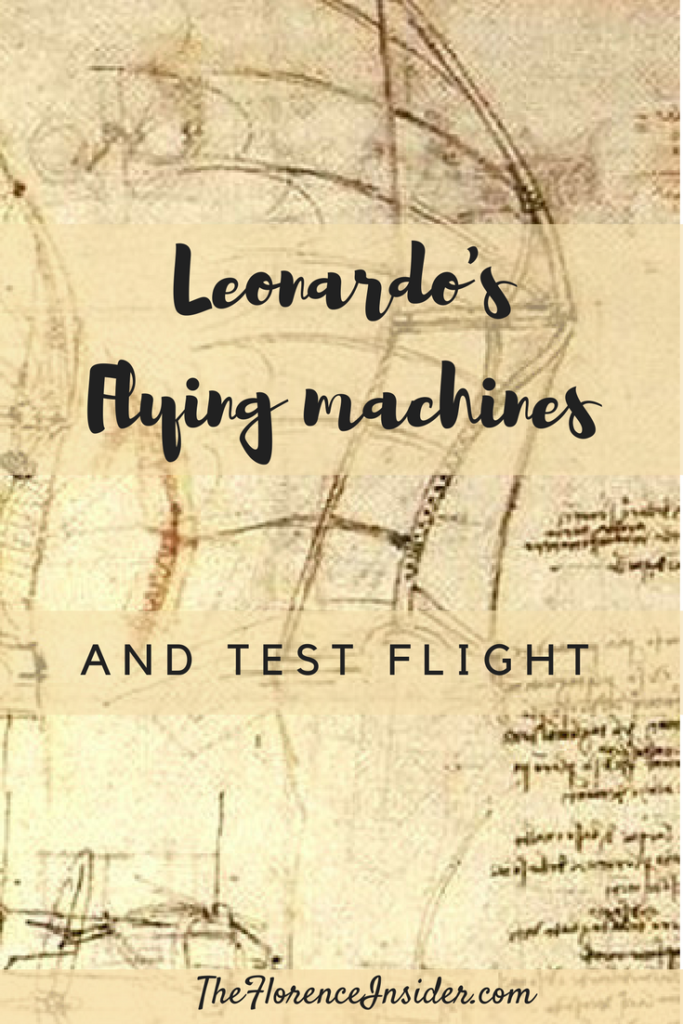Leonardo’s Flying Machines, his studies on flight and Zoroaster da Peretola
Leonardo da Vinci is definitely one of my favorite artists and personalities of the Renaissance. And one of the reasons why I like him so much is his interest for flight, that brought him to design his famous flying machines. But before talking about Leonardo’s flying machines, let’s talk about Leonardo himself!
It was the year 1504 in Florence, and Leonardo da Vinci was very busy. He used to travel around Italy from court to court to work as an artist and engineer, often returning to his hometown, Florence, for short but very productive periods. He had just abandoned the large wall painting of the Battle of Anghiari in Palazzo Vecchio, after a disastrous attempt to reproduce the ancient (and lost) Roman technique of encaustic. Also, he had already started painting his most famous painting ever, the Mona Lisa.
To learn more about Leonardo:
- pick one of my favorite books about Leonardo da Vinci!
- Discover some interesting facts about Leonardo da Vinci
- Learn more about the first painting by Leonardo
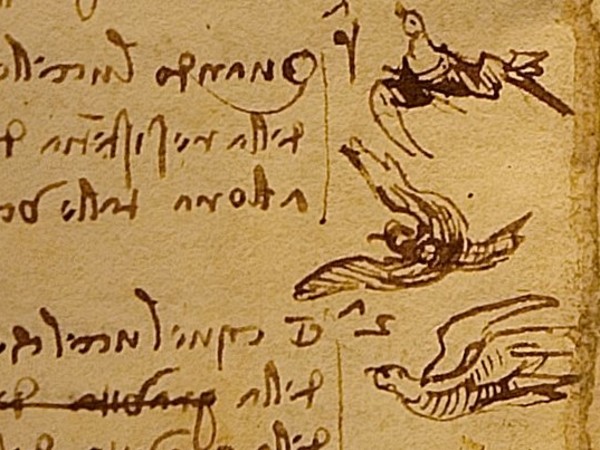
Leonardo’s flying machines and his studies about flight
Among the many things been playing on his mind that year, at the top of the list was his obsession with flying. He focused on studying the anatomy of birds and their flight techniques to design his famous flying machines.
He was also writing an in-depth essay about birds’ flight which was divided into four chapters. The essay never saw the light, but we still can read his Codex on the Flight of the Birds, a collection of notes, drawings and sketches on the subject. The Codex on the Flight of the Birds is still on print! And still is a great example of Leonardo’s deep interest in anatomy, mechanics and for natural world in general.
- Fun fact: Leonardo was a passionate birdwatcher and animal lover. He loved animals so much that he became vegetarian.
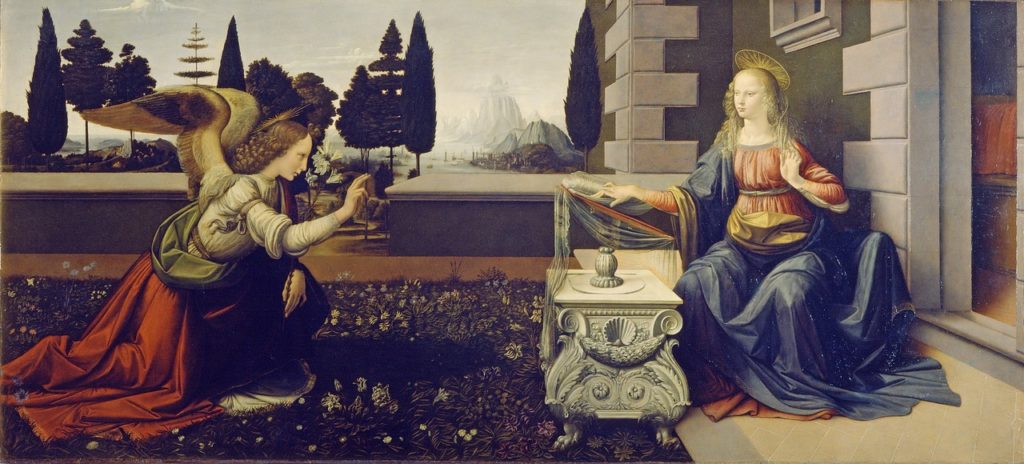
You can tell his great knowledge of bird anatomy from a beautiful detail of one of his painting. The painting is The Annunciation, exhibited at the Uffizi Gallery Museum. On the left you there’s the angel Gabriel, who came to announce her pregnancy to the Virgin Mary. He sports gorgeous bird wings, with very realistic plumage and musculature.
- I’m local licensed tour guide! Here you find my tips for visiting the Uffizi Gallery in Florence
After months of in-depth studies, Leonardo was ready to design his most famous and complex flying machine, called Grande Nibbio (the great kite bird). He also did a practical experiment building a prototype.
But being such a creative inventor, he also designed many other flying machines, like:
- The aerial screw
- the first ornithopter (with pedals)
- A parachute
Not to mention the other prototypes that he designed, and that anticipated our modern amenities centuries before they were actually invented! A tank, a wooden bicycle, a paddle boat, and even a rotisserie!
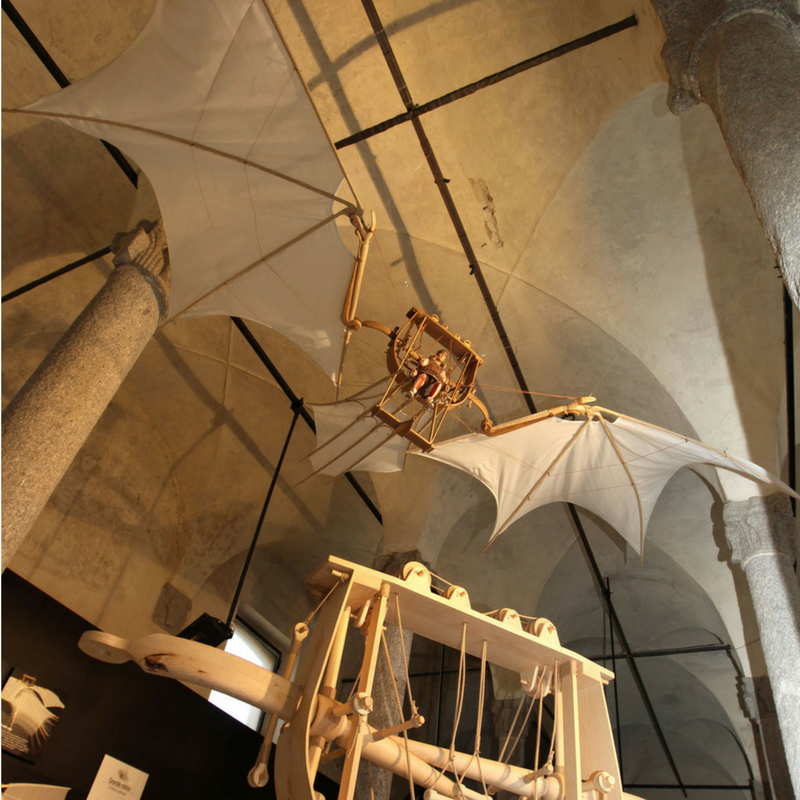
Leonardo’s experimental flight nearby Florence
Leonardo decided to take a test flight with the flying machine and have it driven to Zoroaster da Peretola, his great friend and willing apprentice. The flight took place on Monte Ceceri, a hill in the area of Fiesole. Da Vinci had great expectations. in fact, he wrote in his notes:
“The great bird will take his first flight above from the hill of Mount Ceceri, filling the universe with wonder, filling with his fame all the scriptures and giving eternal glory to the nest where he was born.”
Unfortunately, the experimental flight didn’t brought the desired result. The brave Zoroaster took off from the top of Monte Ceceri, but after a promising glide of several meters, Leonardo’s flying machine and its pilot shattered to the ground. Zoroaster also broke his leg, but he’s mentioned after a few months being in great shape in the Florentine chronicles. So we can assume that he fully recovered from the accident.
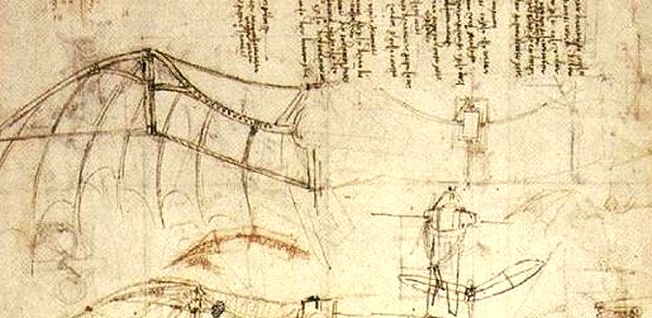
Who was Zoroaster da Peretola
Zoroaster da Peretola (or Zoroastro) was such an extravagant figure that he deserves a little insight. He was actually called Tommaso Masini and was born in 1462 in the village of Peretola. Peretola is located where nowaday is the entrance of the A-1 highway and the airport of Florence. Tommaso the son of a simple greengrocer, but he was telling around that he was instead an illegitimate son of the powerful and rich Bernardo Rucellai. He chose Zoroaster as a stage name to give himself an aura of exotic mystery and strengthen his sinister reputation as a necromancer, magician and alchemist.
It’s quite curious that such an esoteric figure was a great friend of Leonardo, who hated superstition and necromancy more than anything else. The master had repeatedly lashed out at psychics, magicians and fortune tellers, considering them nothing but scammers. Leonardo and Zoroaster were really good friends, so much that the genius from Vinci made him the lead character of some of his humorous novels.
I think it’s also curious that Zoroaster, one of the first men who attempted to fly, was originally from Peretola. The same place where today there is the airport and so many people are flying every day.
We know that Zoroaster as well as magic was also involved in mechanics and painting. He is mentioned among the assistants of Leonardo da Vinci during the painting of the Battle of Anghiari in 1503.
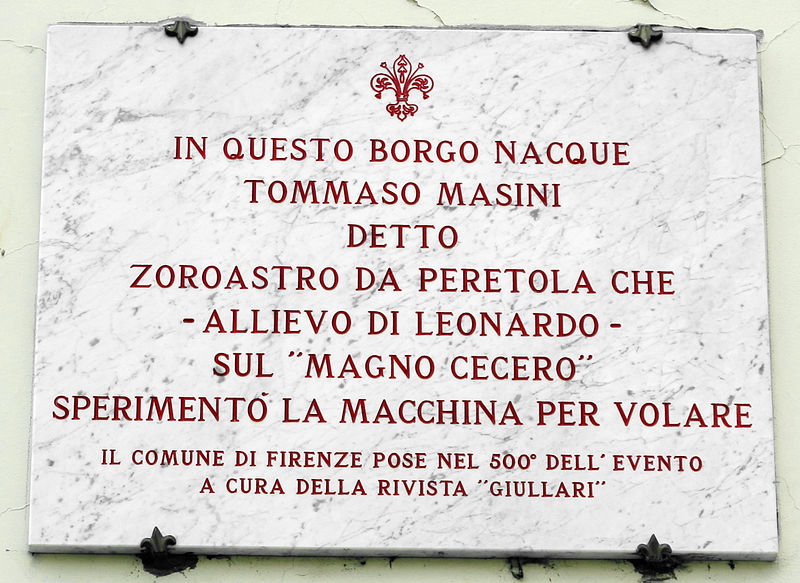
Museums where to see Leonardo’s flying machines
You can see some reconstructions of many of Leonardo’s machines, including those for flying, at the Leonardo da Vinci Interactive Museum in Florence. It’s located in via del Castellaccio (next to via de’ Servi). The museum is super fun, a perfect place where children and teenagers can play with every single machine. You must book your tickets online and you can do it here.
Other models can be found at the small but interesting Museo Leonardiano in Vinci, the birthplace of Leonardo, a small village in the Florentine countryside. They also have a page where you can find the complete list of models of the museum in Vinci.
There is also a museum with reproductions of Leonardo’s machines in Milan.
Recommended books about Leonardo da Vinci:
